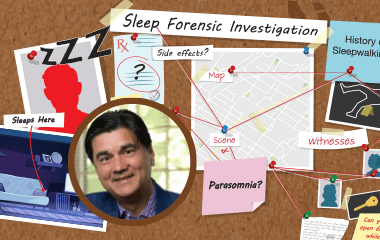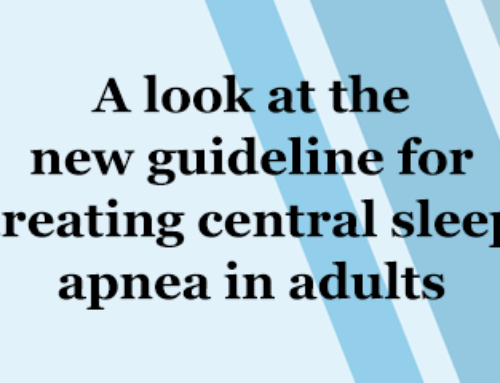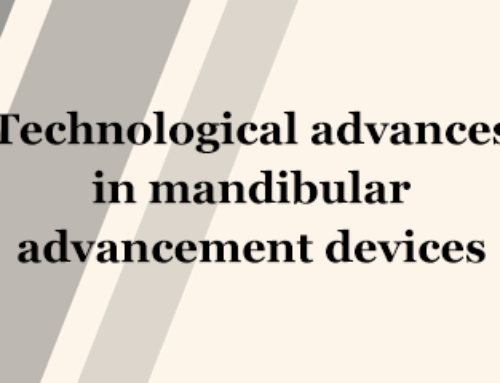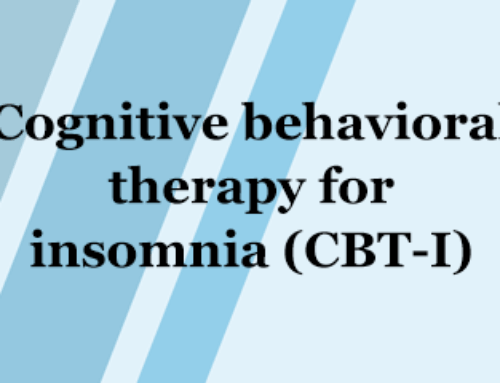By Kate Robards, Senior Writer
In the intricate landscape of forensic medicine, where every case presents a unique puzzle, one area stands out for its complexity and intrigue: sleep forensics. Michel Cramer Bornemann, MD, shares his insights and experiences as the lead investigator at Sleep Forensics Associates, shedding light on the nuanced interplay between sleep disorders and criminal behavior.
Dr. Cramer Bornemann’s foray into sleep forensics began when he was recruited by Dr. Mark Mahowald to become a fellow in sleep medicine at the Minnesota Regional Sleep Disorders Center (MRSDC) at Hennepin County Medical Center. With a background in academic medicine and philosophy, he found himself well-positioned to work alongside Dr. Mahowald and Dr. Carlos Schneck at MRSDC, which is known for its multidisciplinary approach, interweaving aspects of neuroscience and psychiatry into sleep medicine. Following postgraduate training and research, Dr. Cramer Bornemann became a staff physician and later co-director.
Renowned experts on parasomnias, Drs. Mahowald and Schneck began studying sleep disorders together in1982. They identified and named REM sleep behavior disorder (RBD), status dissociatus, parasomnia overlap disorder, sleep-related eating disorder and sleep-related dissociative disorders.
Through their landmark research and publications, the MRSDC has long been recognized as an authority on parasomnias for the international sleep medicine community.
“This recognition spread into the law enforcement and legal communities to evaluate bizarre crimes for which a sleep disorder or parasomnia may be at play,” Dr. Cramer Bornemann said. “Drs. Mahowald and Schenck were often approached by attorneys or law enforcement to analyze criminal cases. Though they offered input, they never formally accepted a case, never accepted a retainer, and never appeared to testify in court. This changed when I came on board and became part of their discussions with attorneys.”
Dr. Cramer Bornemann suggested they develop a forensics program: Sleep Forensics Associates (SFA). The goal was to increase knowledge concerning the spectrum of behaviors attributed to parasomnias and to become a resource to courts by providing up-to-date clinical and scientific information by qualified medical experts, facilitating education and decision-making in the courts.
When it launched in 2006, SFA was part of the department of neurology and Hennepin County Medical Center. As the demand for services became unwieldy, SFA transitioned into a private and independent consulting group.
Following Dr. Mahowald’s death in 2020, Dr. Cramer Bornemann became SFA’s lead investigator. The company uses a multi-disciplinary team approach to case analysis.
In sleep forensics, the principles of cognitive neuroscience are applied to sleep medicine to investigate unusual or bizarre sleep-related behavior associated with alleged criminal activity.
“Sleep forensics involves much more than arriving at a diagnosis or opinion concerning a sleep disorder, such as a parasomnia,” Dr. Cramer Bornemann said. “A sleep forensics expert must be knowledgeable and adept at discussing cognitive neuroscience and altered levels of awareness as it pertains to a sleep disorder. Addressing the degree (or lack) of consciousness allows the court to determine the culpability of the defendant.”
Since SFA was founded approximately 20 years ago, the organization has been involved in over 400 criminal cases, serving as a resource for both the defense and the prosecution. SFA extends its services beyond the United States. Dr. Cramer Bornemann has been involved in cases as far away as New Zealand, Japan and Germany.
“In general, I receive requests to investigate criminal cases that are very bizarre, not easily explained and seemingly nonsensical,” Dr. Cramer Bornemann said.
Though SFA was first developed to address criminal allegations involving possible parasomnias, Dr. Cramer Bornemann’s caseload spans an array of sleep-related conditions, including adverse pharmaceutical side effects, sleep deprivation and obstructive sleep apnea.
In 2019, SFA founders published a review of sleep-related violence in CHEST, analyzing 351 referrals over an 11-year period. While the sleep forensics investigative field is often associated with the “sleepwalking defense” in criminal allegations, the review revealed broader implications.
“The most common referral that we receive is an inquiry to support or refute sexsomnia as the explanation for sexual assault. In the past few years, approximately half of case referrals involve an inquiry into sexsomnia,” Dr. Cramer Bornemann said. “As the stakes in these cases are very high, it is very important to have the appropriate expert medical witness to be involved. Drs. Mahowald and Schenck and I have been surprised at several cases over the years that are completely bizarre and complex that defied any medical or psychiatric explanation.”
Initially, a third of SFA’s cases were attributed to analyzing benzodiazepines and non-benzodiazepine class medications. In fact, Dr. Schenck was one of the first to report and publish about bizarre behavioral side effects attributed to zolpidem in 2005. However, the frequency of such case requests has diminished significantly in the past few years, Dr. Cramer Bornemann noted.
Additionally, while sleep-related violence is a common presenting symptom of RBD, SFA has yet to come across RBD as the cause of a violent crime.
Now, central to SFA’s caseload are parasomnias, particularly those belonging to the NREM subtype.
“The clinical manifestations of primary parasomnias occur during transitions between NREM and REM sleep when brain processes are reorganizing toward a fully declared state,” Dr. Cramer Bornemann explained. “With such frequent state transitions in sleep coupled with the vast number of neural networks, neurotransmitters and other state-determining substances that must be recruited synchronously for full state declaration, switching errors in state declaration likely occur more frequently than we are aware. In understanding parasomnias, it is first important to recognize that wakefulness and sleep are not strictly all-or-none propositions.”
He acknowledged that this concept is likely to be problematic in the courtroom where the medical and legal paradigms in assessing an individual’s mental state are often in conflict.
In the courtroom, it’s common to face skepticism and misconceptions regarding the concept of executing violent acts while asleep. To address doubts or concerns, Dr. Cramer Bornemann becomes involved in extensive pretrial preparations with attorneys. This groundwork allows the attorney to set the stage for the medical expert to connect a parasomnia and its implications to address mens rea, a legal concept referring to criminal intent.
“In this regard, the expert medical witness has to be adept at clearly and succinctly distilling complex concepts in cognitive neuroscience for those in the legal system as well as the laypeople chosen to serve on a jury,” Dr. Cramer Bornemann said.
A typical week for him may include pretrial preparations, discussions with attorneys or court testimony. While he often appears in court, Dr. Cramer Bornemann notes that approximately 70% or more of criminal cases are settled out of court.
He spends a significant amount of time formulating a case report in which he offers his opinion, which often involves extensive medical research. At times, he solicits the involvement of a forensic psychiatrist to gain insight into the influence of a mental health condition.
As the lead investigator at SFA, Dr. Cramer Bornemann’s time is also spent analyzing legal case files, including bodycam videos or audio of initial encounters with an assailant, reviewing medical data or toxicology reports, conducting sleep forensic interviews with defendants or witnesses or, on rare occasions, traveling to the site of the crime to develop a behavioral reconstruction of the series of violent behaviors.
“On occasion, I recommend that the defendant undergo a formal video synchronized in-laboratory polysomnography,” Dr. Cramer Bornemann said. “I carefully review this study to determine conditions which may contribute to the expression of parasomnias or review the video [to see] if any sleep-related behaviors had been exhibited. PSGs can only provide support of a parasomnia as a preexisting condition but cannot prove that a parasomnia was at play during the crime, as they are not directly temporally associated with the event.”
He also spends time fielding inquiries from attorneys to determine if a sleep forensics investigation is warranted. Many referrals are rejected. In fact, according to the CHEST review, SFA has a relatively low 31% acceptance rate.
“Violent parasomnias resulting in forensics or legal implications are very uncommon. There are many commonly encountered conditions which may mimic a parasomnia,” Dr. Cramer Bornemann said.
The most common reason SFA does not accept a case for a parasomnia evaluation is due to contamination by intoxicants, such as alcohol or illicit drugs. Mental health disorders may also produce an altered mental status of disinhibited behaviors. Dr. Cramer Bornemann noted that a parasomnia can only be considered by confidently excluding these conditions. Other times, a case may be rejected when there is not enough data to render a medical opinion.
As science and technology continue to advance, so, too, does the field of sleep forensics.
“Advances in sleep medicine and somnology nicely compliment the rapid advances in neuroscience in appreciating that consciousness and awareness occur on a spectrum and are not all-or-none conditions,” Dr. Cramer Bornemann said.
In this regard, future innovations may pave the way for a more nuanced understanding of human consciousness.
“Continued scientific and technical advances will only continue to reveal that human beings have less voluntary and conscious control than we assume,” Dr. Cramer Bornemann said. “These advances will compel and encourage the legal community to evolve and adapt their understanding of human behavior, which will have tremendous impact on addressing a defendant’s culpability and the possible subsequent punitive phase for the crime.”
As SFA continues to chart new frontiers in the field of sleep forensics, Dr. Cramer Bornemann is navigating the labyrinth of sleep-related crimes one case at a time, paving the way for a future where science and justice intersect.
This article appeared in volume nine, issue two of Montage magazine.





